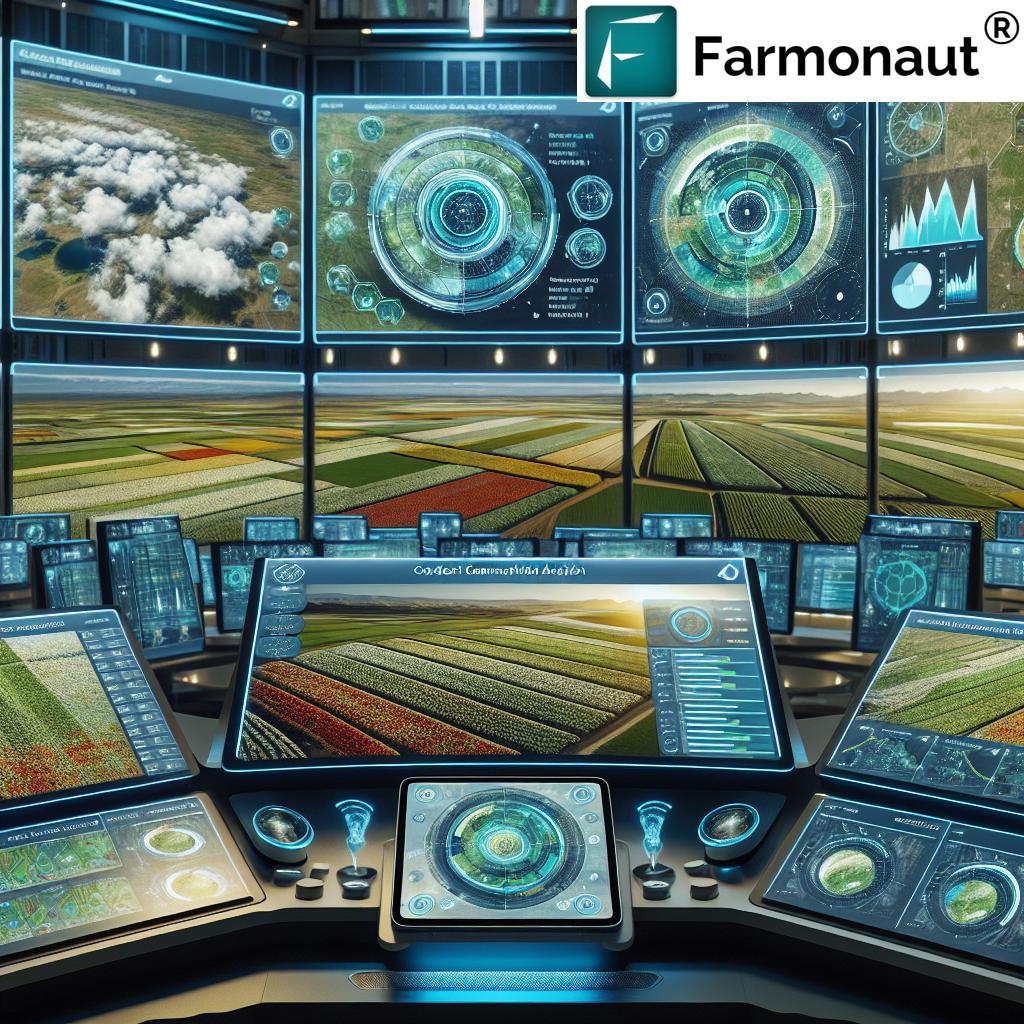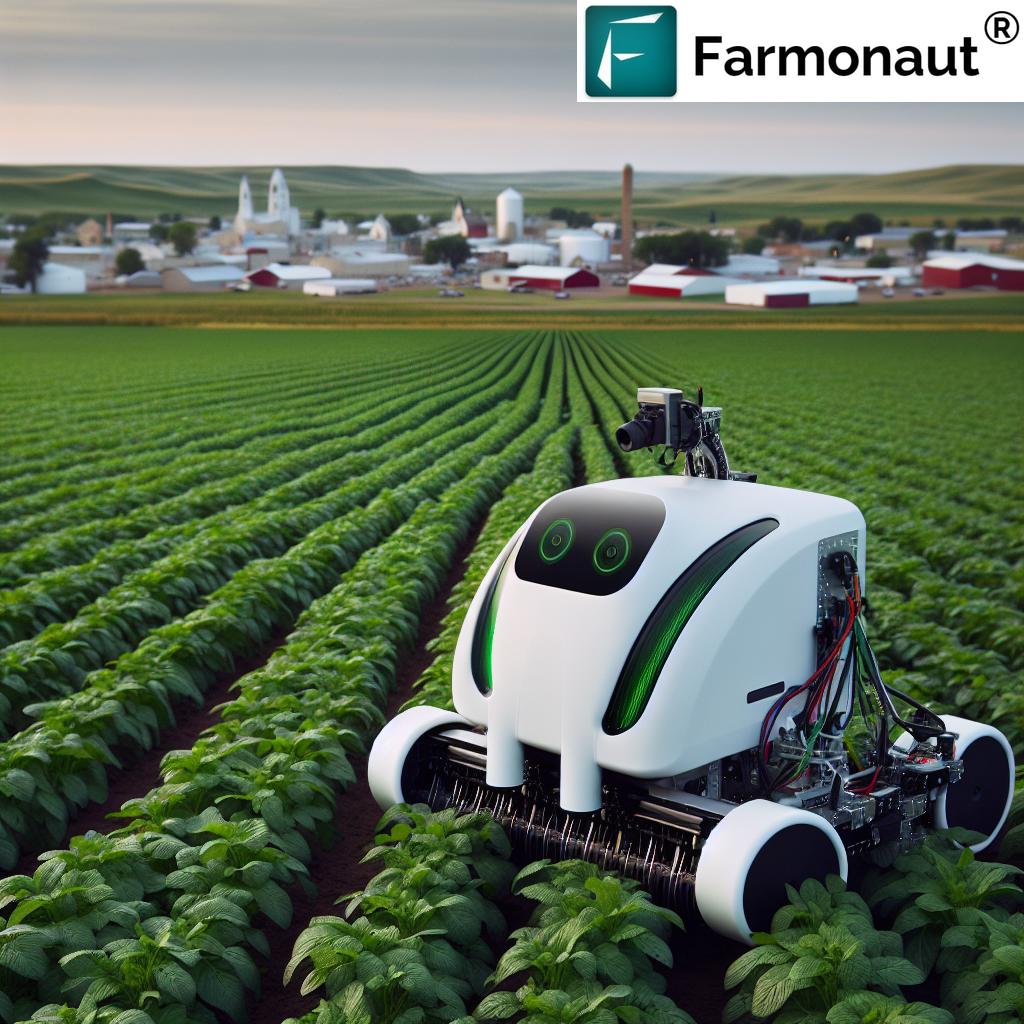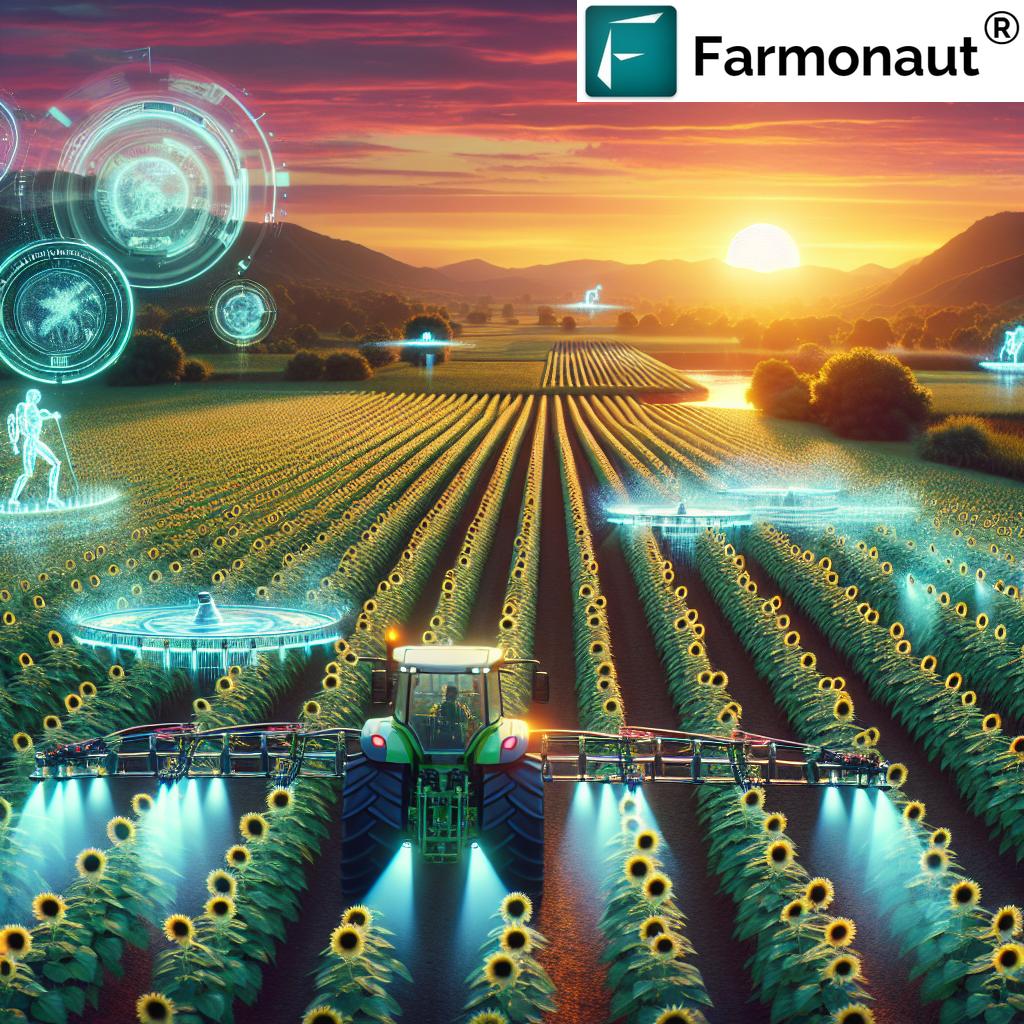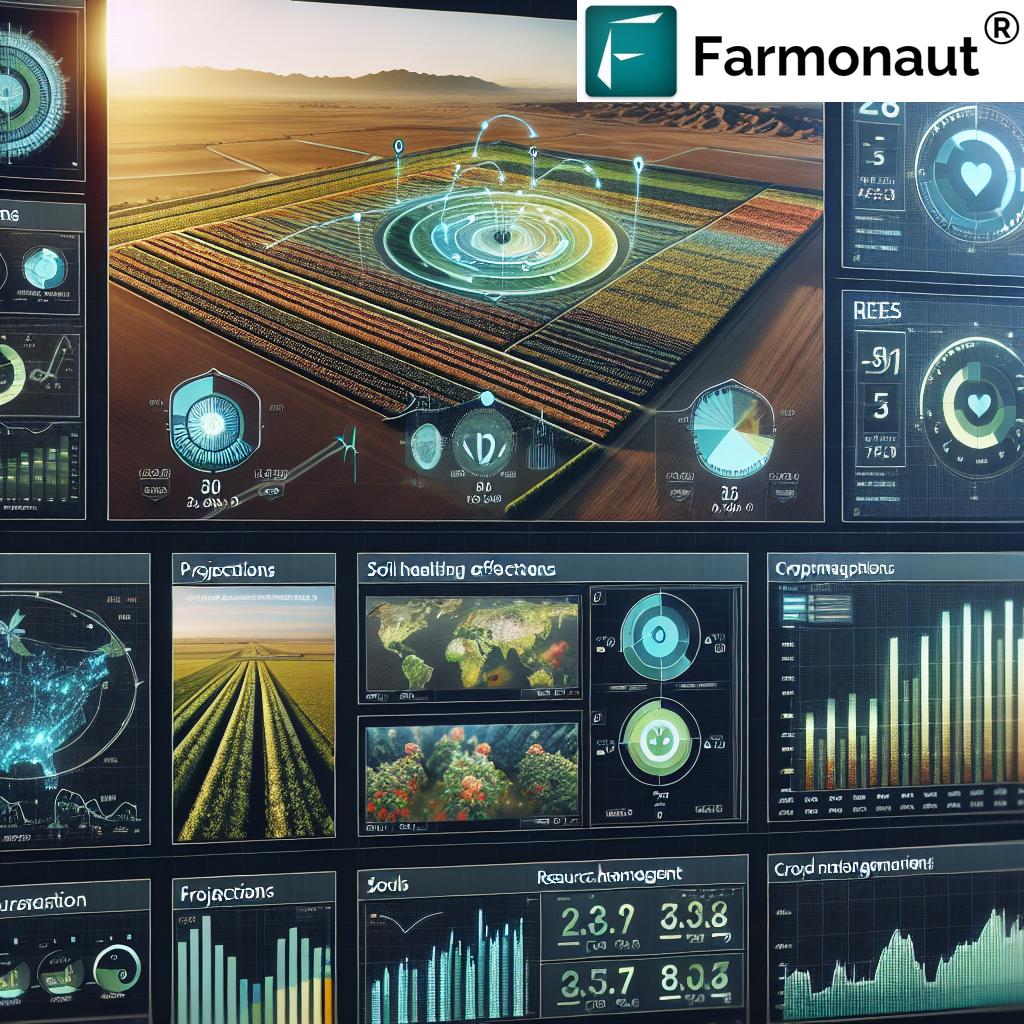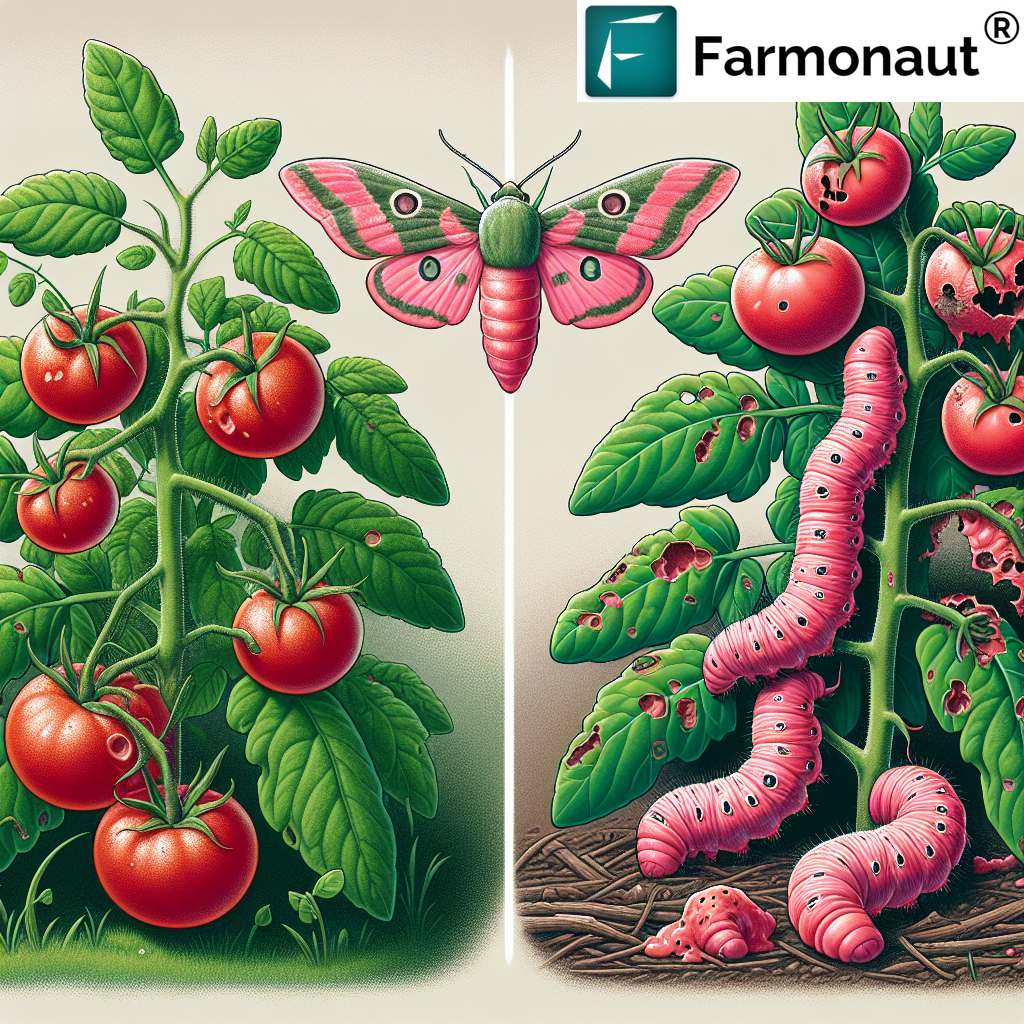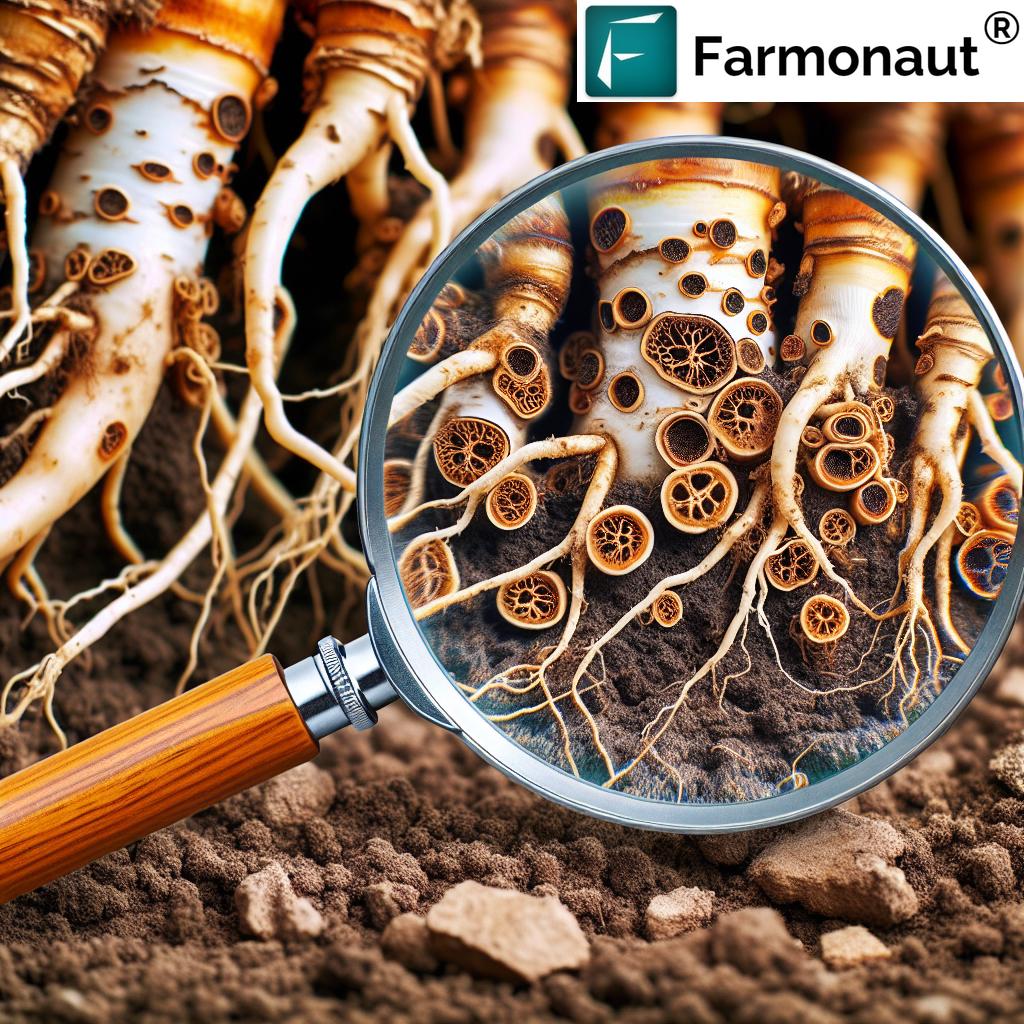Revolutionizing Agriculture: How Big Data and Biophysics Are Transforming Crop Yield Optimization
“Agricultural data analytics can improve crop yield predictions by up to 30% compared to traditional methods.”
In the ever-evolving landscape of modern agriculture, we are witnessing a profound transformation driven by the convergence of big data and biophysics. This revolution is reshaping the way we approach crop yield optimization, ushering in an era of unprecedented precision and efficiency in farming practices. As we delve into this fascinating realm, we’ll explore how agricultural data analytics and precision farming techniques are not just enhancing productivity but also paving the way for more sustainable and resilient agricultural systems.
The Evolution of Agricultural Modeling
The journey of agricultural modeling has been nothing short of remarkable. From traditional process models rooted in biophysical principles to the sophisticated statistical approaches of today, the field has undergone a significant evolution. Let’s take a closer look at this transformation:
- Process Models: These models, based on fundamental scientific principles, have long been the backbone of agricultural predictions. They simulate crop growth and development by considering factors such as photosynthesis, respiration, and nutrient uptake.
- Statistical Models: As data collection methods improved, statistical models gained prominence. These models analyze historical data to identify patterns and make predictions, often proving more accurate in complex real-world scenarios.
- Integrated Big Data Models: The latest frontier in agricultural modeling combines the strengths of process and statistical models with the power of big data. These integrated approaches leverage vast amounts of data from multiple sources to provide more accurate and nuanced predictions.
This evolution has been driven by the need for more accurate predictions in the face of increasingly complex agricultural challenges. Climate change, variable weather patterns, and the demand for sustainable farming practices have all contributed to the push for more sophisticated modeling techniques.
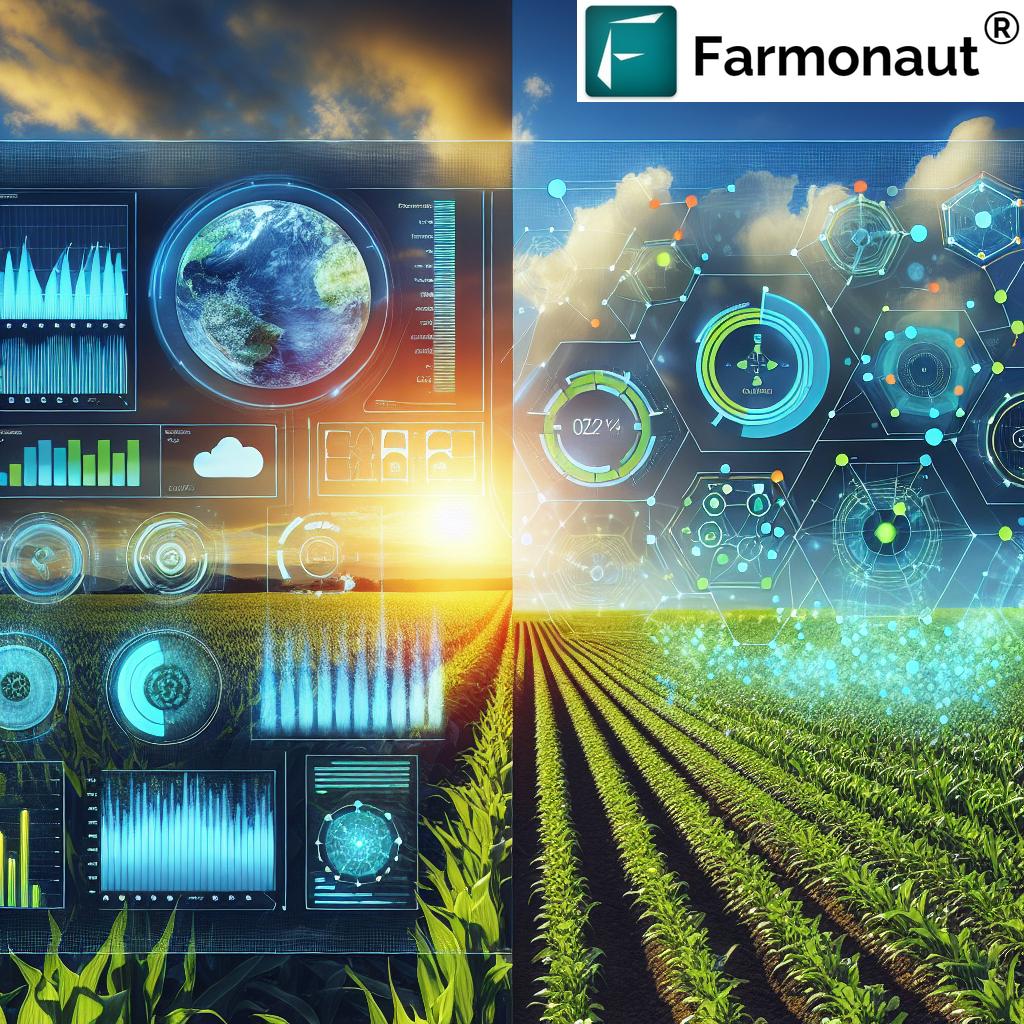
The Role of Big Data in Modern Agriculture
Big data has emerged as a game-changer in the agricultural sector. The sheer volume, variety, and velocity of data now available to farmers and agricultural scientists have opened up new possibilities for crop yield optimization. Here’s how big data is making a difference:
- Real-time Monitoring: Satellite imagery, IoT sensors, and drones provide continuous streams of data on crop health, soil conditions, and weather patterns.
- Predictive Analytics: Advanced algorithms process historical and real-time data to forecast crop yields, pest outbreaks, and optimal harvest times.
- Precision Resource Management: Data-driven insights enable farmers to apply water, fertilizers, and pesticides with pinpoint accuracy, reducing waste and environmental impact.
The integration of big data into agricultural practices is not just about collecting vast amounts of information; it’s about transforming that data into actionable insights that can drive better decision-making on the farm.
Weather-Based Farming Decisions
One of the most significant impacts of big data in agriculture is in the realm of weather-based farming decisions. Climate conditions play a crucial role in crop development, and the ability to make informed decisions based on accurate weather forecasts can significantly improve crop yields. Here’s how data-driven approaches are enhancing weather-based decision-making:
- Microclimate Modeling: Advanced sensors and satellite data allow for the creation of highly localized weather models, providing farmers with field-specific forecasts.
- Crop-Specific Weather Insights: By combining weather data with crop growth models, farmers can receive tailored recommendations for planting, irrigation, and harvesting based on the specific needs of their crops.
- Risk Management: Improved weather predictions help farmers mitigate risks associated with extreme weather events, allowing for better crop protection strategies.
These weather-based insights are crucial for optimizing resource allocation and maximizing crop yields in the face of increasingly unpredictable climate patterns.
Soil Moisture Management: A Data-Driven Approach
Effective soil moisture management is critical for crop health and yield optimization. With the advent of big data and advanced sensing technologies, farmers now have unprecedented insight into soil moisture conditions. Here’s how data-driven approaches are revolutionizing soil moisture management:
- Precision Irrigation: Soil moisture sensors and weather data feed into intelligent irrigation systems that deliver water precisely when and where it’s needed, reducing water waste and improving crop health.
- Soil Moisture Mapping: Remote sensing technologies and on-ground sensors enable the creation of detailed soil moisture maps, allowing for variable-rate irrigation across fields.
- Predictive Soil Moisture Models: By integrating historical data, current sensor readings, and weather forecasts, advanced models can predict future soil moisture levels, enabling proactive management strategies.
These data-driven approaches to soil moisture management not only improve crop yields but also contribute to water conservation efforts, a critical concern in many agricultural regions facing water scarcity.
The Rise of Data-Driven Farm Management Systems
The integration of big data, machine learning, and agricultural science has given rise to sophisticated data-driven farm management systems. These systems are transforming the way farms operate, offering a holistic approach to crop management. Key features of these systems include:
- Centralized Data Management: All farm-related data, from soil tests to yield maps, are stored and analyzed in a central platform.
- Real-time Decision Support: AI-powered algorithms provide farmers with real-time recommendations for various farm operations.
- Automated Reporting: Generate comprehensive reports on farm performance, resource utilization, and yield predictions.
- Integration with Farm Equipment: Many systems can directly interface with smart farm equipment for automated, precision operations.
These data-driven farm management systems are not just improving efficiency; they’re enabling a new level of precision in agriculture that was previously unattainable.
“Machine learning algorithms in agriculture can process over 1 million data points per second for real-time farm management decisions.”
Farmonaut: Pioneering Digital Farming Solutions
In the realm of digital farming solutions, Farmonaut stands out as a pioneering force. By leveraging cutting-edge technologies such as satellite imagery, artificial intelligence, and machine learning, Farmonaut is making precision agriculture accessible to farmers worldwide. Here’s how Farmonaut is contributing to the revolution in crop yield optimization:
- Satellite-Based Crop Monitoring: Farmonaut utilizes multispectral satellite imagery to provide real-time insights into crop health, enabling early detection of issues and timely interventions.
- AI-Powered Advisory System: The Jeevn AI system offers personalized recommendations based on crop conditions, weather forecasts, and historical data.
- Resource Optimization: By providing accurate data on crop needs, Farmonaut helps farmers optimize the use of water, fertilizers, and other inputs.
- Weather Intelligence: Integration of local weather data allows for more precise farming decisions and improved risk management.
Farmonaut’s digital farming solutions exemplify how technology can be harnessed to address the complex challenges of modern agriculture, promoting both productivity and sustainability.
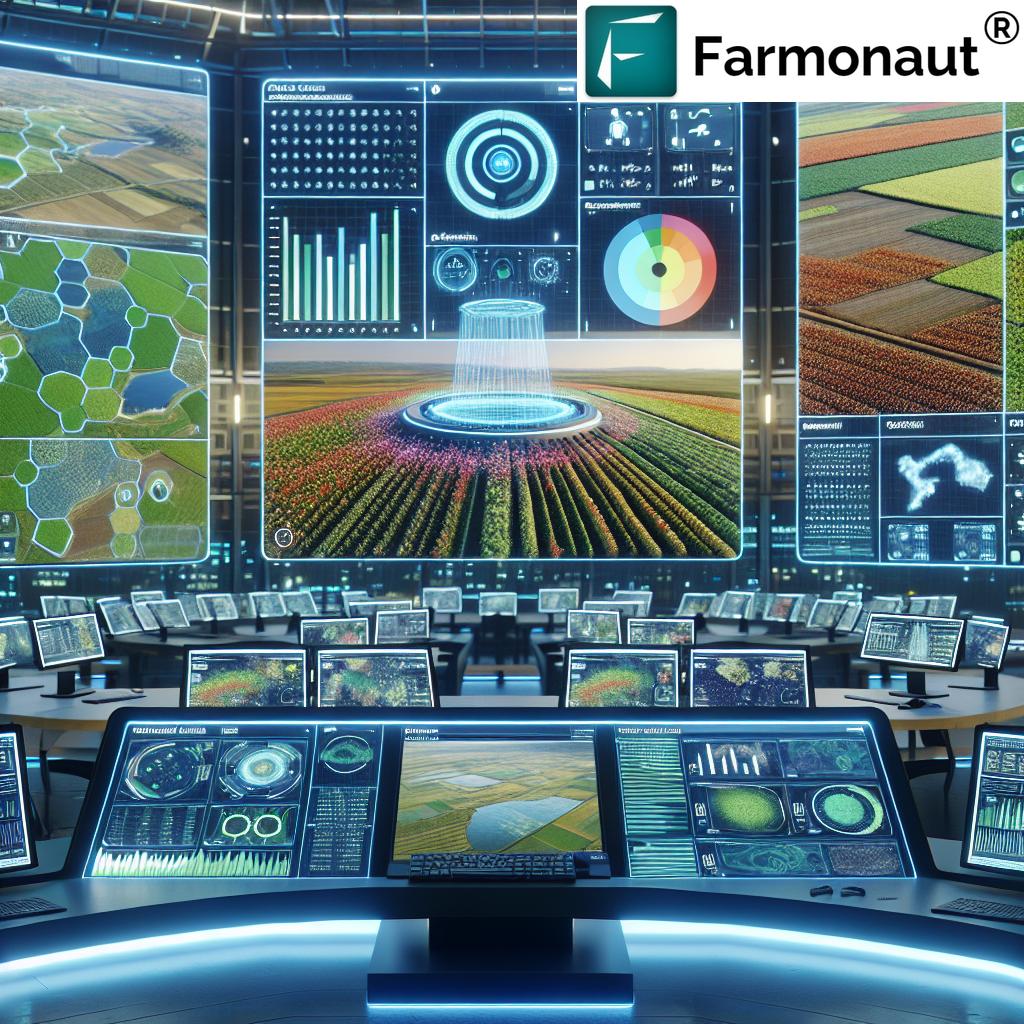
Machine Learning in Agriculture: From Data to Insights
The application of machine learning in agriculture has opened up new frontiers in crop yield optimization. These sophisticated algorithms can analyze vast amounts of data to uncover patterns and insights that would be impossible for humans to discern. Here’s how machine learning is transforming agricultural practices:
- Crop Yield Prediction: Machine learning models can predict crop yields with unprecedented accuracy by analyzing historical data, weather patterns, and current crop conditions.
- Pest and Disease Detection: Advanced image recognition algorithms can identify signs of pest infestations or diseases in crops, often before they’re visible to the human eye.
- Optimal Planting Strategies: By analyzing soil conditions, weather forecasts, and historical yield data, machine learning can recommend the best times and methods for planting different crops.
- Resource Allocation: These algorithms can optimize the distribution of resources like water and fertilizers across a farm, maximizing efficiency and minimizing waste.
The power of machine learning in agriculture lies in its ability to continuously learn and improve from new data, making it an invaluable tool in the ever-changing landscape of farming.
Challenges in Agricultural Data Assimilation
While the potential of big data in agriculture is immense, the process of data assimilation presents several challenges. Addressing these challenges is crucial for realizing the full potential of data-driven agriculture:
- Data Quality and Consistency: Ensuring the accuracy and consistency of data from various sources can be challenging, especially when dealing with different sensor types and data collection methods.
- Data Integration: Combining data from diverse sources such as satellite imagery, ground sensors, and weather stations into a coherent dataset requires sophisticated integration techniques.
- Real-time Processing: The ability to process and analyze large volumes of data in real-time is essential for timely decision-making in agriculture.
- Privacy and Security: As farm data becomes increasingly valuable, ensuring the privacy and security of this information is a growing concern.
Overcoming these challenges requires ongoing collaboration between agricultural scientists, data scientists, and technology providers to develop robust systems for agricultural data assimilation.
Sustainable Nitrogen Management Through Data Analytics
Nitrogen management is a critical aspect of crop production, with significant implications for both yield and environmental impact. Data analytics is revolutionizing this area, enabling more sustainable and efficient nitrogen use:
- Precision Application: By analyzing soil data, crop health indicators, and weather conditions, farmers can apply nitrogen with greater precision, reducing waste and environmental runoff.
- Dynamic Fertilizer Recommendations: Advanced models can provide real-time recommendations for nitrogen application based on current crop needs and environmental conditions.
- Nitrogen Uptake Modeling: Sophisticated models that simulate nitrogen uptake by crops help in optimizing fertilizer application schedules.
- Environmental Impact Assessment: Data-driven approaches allow for better assessment and mitigation of the environmental impacts of nitrogen use in agriculture.
Sustainable nitrogen management through data analytics not only improves crop yields but also contributes to reducing the environmental footprint of agriculture.
Balancing Empirical and Theoretical Modeling in Agriculture
The integration of big data in agriculture has led to a reevaluation of the balance between empirical and theoretical modeling approaches. This balance is crucial for developing robust and accurate agricultural models:
- Hybrid Modeling Approaches: Combining empirical data-driven models with theoretical process-based models can provide more comprehensive and accurate predictions.
- Model Calibration: Big data allows for more effective calibration of theoretical models, improving their accuracy in real-world applications.
- Validation of Theoretical Concepts: Empirical data can be used to validate and refine theoretical concepts in agricultural science.
- Addressing Model Limitations: Understanding the limitations of both empirical and theoretical models is crucial for developing more robust predictive tools.
The synergy between empirical and theoretical approaches, facilitated by big data, is leading to more comprehensive and accurate agricultural modeling systems.
The Future of Agricultural Process Modeling
As we look to the future, agricultural process modeling is poised for significant advancements. The integration of big data, machine learning, and biophysics is opening up new possibilities:
- Multi-scale Modeling: Future models will seamlessly integrate data from molecular to ecosystem levels, providing a more holistic understanding of agricultural systems.
- Real-time Model Adaptation: Advanced algorithms will allow models to adapt in real-time based on incoming data, improving their accuracy and relevance.
- Integration of Genomic Data: As our understanding of crop genetics improves, future models will incorporate genomic data to provide more precise predictions and recommendations.
- Climate Change Adaptation: Agricultural models will play a crucial role in developing strategies for adapting to and mitigating the effects of climate change on agriculture.
The future of agricultural process modeling is not just about improving yield predictions; it’s about developing comprehensive tools that can guide sustainable and resilient farming practices in an ever-changing world.
Innovations in Agricultural Technology: Shaping the Future of Farming
The convergence of big data and biophysics is driving a wave of innovations in agricultural technology. These innovations are not only enhancing crop yield optimization but also promoting more sustainable and efficient farming practices:
- IoT in Agriculture: The Internet of Things (IoT) is enabling the deployment of vast networks of sensors across farms, providing real-time data on everything from soil moisture to crop health.
- Blockchain for Traceability: Blockchain technology is being used to enhance traceability in the agricultural supply chain, improving food safety and transparency.
- Robotics and Automation: Advanced robotics and automation systems are revolutionizing tasks like planting, harvesting, and crop monitoring.
- AI-powered Decision Support: Artificial Intelligence is being used to develop sophisticated decision support systems that can process complex agricultural data and provide actionable insights.
These technological innovations are not just improving efficiency; they’re enabling a new paradigm of precision agriculture that promises to make farming more productive, sustainable, and resilient.
The Role of Data-Driven Decision Making in Modern Agriculture
Data-driven decision making is becoming increasingly central to modern agricultural practices. By leveraging big data and advanced analytics, farmers and agricultural managers can make more informed decisions across all aspects of farm operations:
- Crop Selection: Data analytics can help farmers choose the most suitable crops for their specific soil and climate conditions, maximizing yield potential.
- Resource Allocation: Precision application of water, fertilizers, and pesticides based on data-driven insights leads to more efficient resource use.
- Risk Management: Advanced forecasting models help farmers better prepare for and mitigate risks associated with weather events and market fluctuations.
- Performance Tracking: Continuous monitoring and analysis of farm performance data enable ongoing optimization of agricultural practices.
The shift towards data-driven decision making is empowering farmers to run their operations more like precision-managed businesses, leading to improved productivity and sustainability.
The Impact of Big Data on Agricultural Research and Development
Big data is not only transforming farm operations but also revolutionizing agricultural research and development. The abundance of data and advanced analytical tools are accelerating scientific discoveries and innovations in agriculture:
- Accelerated Crop Breeding: Big data analytics are enabling researchers to identify desirable genetic traits more quickly, speeding up the development of improved crop varieties.
- Climate-Resilient Agriculture: Large-scale data analysis is helping scientists develop strategies and crop varieties that are more resilient to climate change.
- Ecosystem Modeling: Comprehensive data sets allow for more accurate modeling of agricultural ecosystems, improving our understanding of complex interactions between crops, soil, and the environment.
- Precision Phenotyping: Advanced imaging and sensor technologies, coupled with big data analytics, are enabling more precise and efficient crop phenotyping.
The integration of big data in agricultural research is not only advancing our scientific understanding but also bridging the gap between laboratory discoveries and practical applications in the field.
Challenges and Opportunities in Data-Driven Agriculture
While the potential of data-driven agriculture is immense, it also presents several challenges that need to be addressed:
- Data Ownership and Privacy: As farm data becomes increasingly valuable, questions of data ownership, access, and privacy need to be carefully addressed.
- Digital Divide: Ensuring that small-scale farmers and those in developing regions have access to data-driven technologies is crucial for equitable agricultural development.
- Data Standardization: Developing common standards for agricultural data collection and sharing is essential for maximizing the value of big data in agriculture.
- Skills Gap: There is a growing need for professionals who can bridge the gap between agricultural science and data analytics.
Addressing these challenges will be crucial for realizing the full potential of data-driven agriculture and ensuring that its benefits are widely accessible.
The Role of Farmonaut in Agricultural Innovation
Farmonaut is at the forefront of agricultural innovation, leveraging advanced technologies to make precision agriculture more accessible and effective. Here’s how Farmonaut is contributing to the transformation of agriculture:
- Satellite-Based Crop Monitoring: Farmonaut’s satellite imagery analysis provides farmers with valuable insights into crop health and field conditions, enabling timely interventions.
- AI-Powered Advisory: The Jeevn AI system offers personalized recommendations based on real-time data, helping farmers make informed decisions.
- Data Integration Platform: Farmonaut’s platform integrates various data sources, providing a comprehensive view of farm operations and performance.
- Accessibility: By offering solutions through mobile and web applications, Farmonaut is making advanced agricultural technologies accessible to a wide range of farmers.
Farmonaut’s innovative approach exemplifies how technology can be harnessed to address the complex challenges of modern agriculture, promoting both productivity and sustainability.
Conclusion: The Future of Crop Yield Optimization
As we look to the future, it’s clear that the integration of big data and biophysics will continue to drive innovations in crop yield optimization. The convergence of advanced sensing technologies, machine learning algorithms, and our deepening understanding of plant biology is opening up new frontiers in agricultural science and practice.
The future of agriculture will likely see even more precise and personalized farming approaches, with data-driven decisions guiding every aspect of crop production. From gene editing for climate resilience to AI-powered farm management systems, the possibilities are both exciting and transformative.
However, as we embrace these technological advancements, it’s crucial to ensure that they are developed and implemented in ways that are sustainable, equitable, and aligned with the broader goals of food security and environmental stewardship.
The revolution in crop yield optimization through big data and biophysics is not just about increasing productivity; it’s about creating a more resilient, sustainable, and efficient agricultural system that can meet the challenges of feeding a growing global population in an era of climate change.
As we continue to push the boundaries of what’s possible in agriculture, platforms like Farmonaut will play a crucial role in bridging the gap between cutting-edge research and practical, on-farm applications. By making advanced agricultural technologies accessible and user-friendly, such platforms are empowering farmers to become active participants in the data-driven agricultural revolution.
The future of agriculture is data-driven, precision-focused, and deeply rooted in scientific understanding. As we continue to innovate and refine our approaches to crop yield optimization, we move closer to a future where sustainable, high-yield agriculture is not just a goal, but a reality.
FAQ Section
Q: How does big data improve crop yield optimization?
A: Big data improves crop yield optimization by providing farmers with precise, real-time information about crop health, soil conditions, and weather patterns. This allows for more accurate decision-making in areas such as irrigation, fertilization, and pest control, leading to improved yields and resource efficiency.
Q: What role does machine learning play in modern agriculture?
A: Machine learning in agriculture analyzes vast amounts of data to identify patterns and make predictions. It’s used for crop yield forecasting, pest detection, optimal planting strategies, and resource allocation, continuously improving its accuracy as it processes more data.
Q: How does Farmonaut contribute to precision agriculture?
A: Farmonaut uses satellite imagery and AI to provide farmers with real-time insights into crop health and field conditions. Its AI-powered advisory system offers personalized recommendations, helping farmers make data-driven decisions for improved crop management.
Q: What are the main challenges in implementing data-driven agriculture?
A: Key challenges include ensuring data quality and consistency, integrating data from diverse sources, processing large volumes of data in real-time, and addressing privacy and security concerns related to farm data.
Q: How is agricultural modeling evolving with big data?
A: Agricultural modeling is evolving to integrate traditional process-based models with data-driven statistical approaches. This hybrid approach combines scientific principles with vast amounts of real-world data, leading to more accurate and comprehensive predictions.
Explore Farmonaut’s Digital Farming Solutions
Ready to revolutionize your farming practices with data-driven insights? Explore Farmonaut’s comprehensive suite of digital farming solutions:
For developers interested in integrating Farmonaut’s powerful agricultural data into their own applications, check out our API and API Developer Docs.
Farmonaut Subscriptions
| Model Type | Data Sources | Key Features | Advantages | Limitations | Prediction Accuracy | Data Points Analyzed |
|---|---|---|---|---|---|---|
| Process Models | Scientific principles, limited field data | Based on biophysical processes | Strong theoretical foundation | May oversimplify complex real-world scenarios | ~70% | Hundreds |
| Statistical Models | Historical yield data, weather records | Pattern recognition, correlation analysis | Can capture complex relationships | May lack explanatory power | ~80% | Thousands |
| Integrated Big Data Models | Satellite imagery, IoT sensors, genetic data, historical records | AI/ML algorithms, real-time data processing | High accuracy, adaptability to changing conditions | Requires large amounts of quality data | ~85% | Millions |






